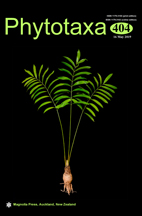Abstract
Pollen morphology of 27 species of Photinia sensu stricto and five closely related genera of subfamily Maloideae (Rosaceae) were studied in detail. Palynomorphological characteristics were examined using scanning electron microscopy (SEM). Comparative pollen analysis was accomplished based on pollen size, shape, polar and equatorial views, polar and equatorial diameter ratio (P/E ratio), width of aperture, and exine ornamentation. The pollen grains of studied species were found to be monad, tricolporate, small to medium in size (P=17.42–30.45 μm, E=9.26–20.18 μm) and to have shapes oblate-spheroidal (0.88–1.0 μm), prolate-spheroidal (1.01–1.14 μm), sub-prolate (1.15–1.33 μm), prolate (1.34–2 μm), and perprolate (>2 μm). The exine ornamentation was perforated-striate, and two different types were identified. The result of quantitative characters has paltry taxonomic importance. The characters studied here delimit at generic level for some genera but not at species level. The obtained result was partially consistent with that of molecular studies published earlier. The pollen size and shape were found to be different between Asian and American species of Photinia. Especially exine sculpture was found to be an important feature to distinguish species of all genera studied. PCA analysis showed that the pollen shape, pollen sculpture, pollen size, and polarity are the key characters to distinguish the species of Photinia and the closely related genera in subfamily Maloideae. Based on pollen exine, two groups (Type I and Type II) were distinguished. The aim of the present study was to find out the taxonomic significance of palynomorphological characteristics in subfamily Maloideae (Rosaceae).

